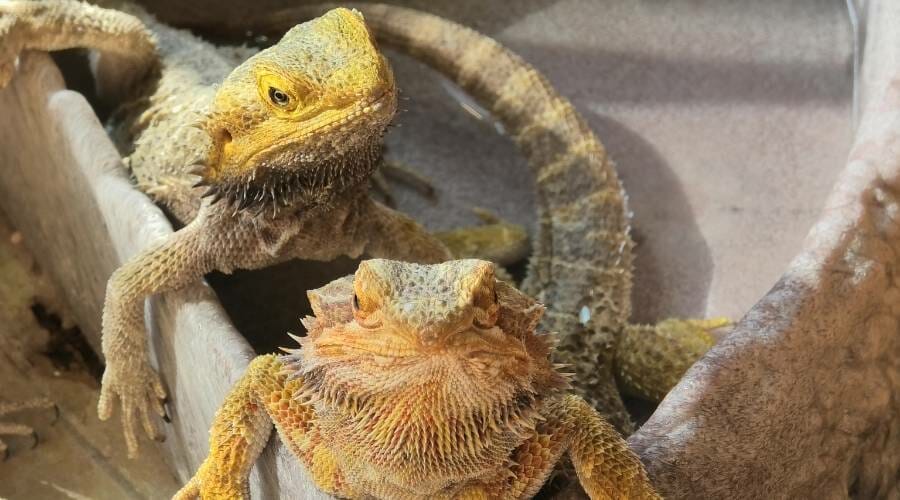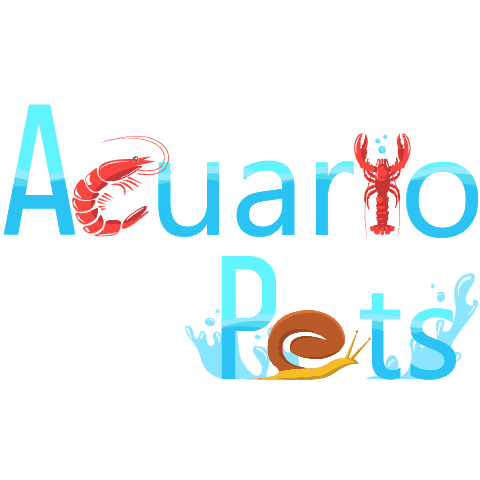This post was created with help from AI tools and carefully reviewed by a human (Muntaseer Rahman) . For more on how we use AI on this site, check out our Editorial Policy.
Check Out These FREE Tools We Made JUST For You!
Bearded Dragon’s Tail Rot or Just Shedding? How to Tell Before It’s Too Late

Look, I get it. You’re staring at your bearded dragon’s tail right now, and something looks off. Maybe it’s darker than usual. Maybe it looks a bit crusty. And now you’re spiraling down a Google rabbit hole at 2 AM wondering if your little buddy is about to lose their tail.
Been there. Done that. Got the vet bill.
Here’s the thing about bearded dragons—they’re basically tiny desert dinosaurs that occasionally decide to freak us out with their tails. Sometimes it’s just normal shedding. Sometimes it’s tail rot, which is about as fun as it sounds. The trick is knowing which one you’re dealing with before things get ugly.
What Even Is Tail Rot Anyway?
Tail rot is when your bearded dragon’s tail literally starts dying from the tip upward.
Not to be dramatic, but it’s basically a bacterial infection that cuts off blood flow and kills tissue. The technical term is “avascular necrosis,” but let’s just call it what it is: a serious problem that needs immediate attention.
Unlike your average gecko that can just drop its tail and grow a new one like some kind of reptile superhero, bearded dragons can’t regrow their tails. Once it’s gone, it’s gone forever. No second chances here.
The “Oh Crap” Moment: Spotting Tail Rot
So how do you know if you’re looking at tail rot versus just some gnarly shedding? Let me break it down for you.
The Color Situation
Normal shedding makes your beardie’s tail look grayish, dull, or whitish. Think of it like old paint peeling off a wall—not pretty, but totally normal.
Tail rot? That’s a whole different beast. The tail starts turning darker at the tip—we’re talking light gray at first, then progressing to blue, dark purple, and eventually black. It’s like watching a time-lapse of a banana going bad, except way more concerning.
Some bearded dragons naturally have darker tails, which makes this even more confusing. But here’s the key: if your dragon’s tail has always been that color and looks healthy otherwise, you’re probably fine. It’s the sudden darkening that should set off alarm bells.
The Touch Test
Grab a paper towel and gently touch your beardie’s tail. I know, I know—if they’re cranky about it, that’s actually telling you something too.
Shedding feels:
- Rough or bumpy
- Dry and flaky
- Still somewhat flexible
Tail rot feels:
- Hard and brittle (like a dried twig)
- Stiff and inflexible
- Completely dried out
- Sometimes there’s a visible constriction or tight ring around the tail
If you can bend the tail slightly and it moves normally, that’s usually a good sign. If it feels like trying to bend a pencil, call your vet.
The Smell Check
This one’s gross but important. Normal shedding doesn’t smell like anything special—maybe a bit musty if you’re really sniffing.
Tail rot can have a foul odor because tissue is literally decaying. If your beardie’s tail smells like something died (because, well, something did), that’s tail rot.
The 20-Minute Bath Test
Here’s a trick that’s saved many a beardie owner from unnecessary panic: give your dragon a 20-minute soak in warm water.
If it’s just stuck shed, the water will help soften it up and the skin will start looking better. The dark coloring might lighten up, and loose skin pieces might come off naturally.
If it’s tail rot, a bath won’t fix it. The darkened area stays dark, stays hard, and generally looks the same level of concerning as before.

Your Beardie Has More to Say…
This article tells you WHAT to do, but do you know WHY your dragon needs it? Or what they’re thinking when you do it wrong?
Read the full rant (all 20 chapters of it) in: “What Your Bearded Dragon Wishes You Knew”
*Told by a very frustrated beardie who’s had ENOUGH of watching you guess.*
The Sneaky Ways Shedding Can Fool You
Let’s talk about normal shedding for a second because it can look pretty alarming if you’re not expecting it.
Baby bearded dragons shed like crazy—we’re talking every few weeks. Adult dragons? Maybe a few times a year, and they often shed in patches rather than all at once.
Sometimes the tail is the last place to shed, or it sheds in weird sections. This is totally normal and nothing to freak out about.
What Normal Tail Shedding Looks Like:
- The entire tail or large sections turn dull and grayish
- Skin looks dead and flaky (because it is—that’s the point)
- Your dragon might rub against things to help the shed come off
- The color change is temporary and returns to normal after shedding
- No pain, no smell, no behavioral changes
When Shedding Becomes a Problem
Here’s where things get tricky. Incomplete sheds can actually CAUSE tail rot.
If old shed skin doesn’t come off properly, it can build up in rings around the tail tip. Over time, these rings get tighter and tighter, cutting off circulation like a tourniquet. No blood flow = dead tissue = tail rot.
This is why those regular baths during shedding are actually super important, not just nice-to-have spa treatments for your dragon.
Red Flags That Scream “Vet Now”
Look, I’m not trying to make you paranoid. But there are some signs that mean you need to stop reading this article and call your vet immediately.
Physical Symptoms That Are Bad News:
- Black, blue, or dark purple coloring starting at the tip and creeping up the tail
- Tail feels cold to the touch (no blood flow)
- Visible kinking, bending, or deformity
- Swelling anywhere on the tail
- Open wounds or bleeding
- Tail tip that’s completely dried out and shriveled
Behavioral Red Flags:
Your beardie is usually a chill little dude, but now they’re acting weird? Pay attention to these changes:
- Sudden aggression or irritability (they’re in pain)
- Hiding more than usual
- Loss of appetite
- Hissing or trying to bite when you come near
- Reacting like it hurts when their tail touches anything
- Lethargy or just seeming “off”
If their tail actually falls off on its own, that’s a full-blown emergency. At that point, the infection has likely spread into their body, and they need immediate veterinary intervention to survive.
How Tail Rot Even Happens (And How to Prevent It)
Understanding what causes tail rot is half the battle in preventing it. Spoiler alert: a lot of it comes down to trauma and bad husbandry.
The Most Common Culprits:
1. Cage Mate Drama
Bearded dragons are territorial little jerks. Housing two beardies together is basically asking for trouble. They’ll fight, bite each other’s tails, and create perfect entry points for infection.
The fix: One dragon per tank. Always. Even if they were clutch mates. Even if they “got along fine as babies.” They’re not social animals, and they don’t need friends.
2. Live Feeder Injuries
That cricket you left in the tank overnight? Yeah, it can bite back. Stressed insects will sometimes attack your dragon, especially at night.
The fix: Never leave live feeders in the tank. Remove whatever they don’t eat within 10-15 minutes.
3. Incomplete Sheds
We already covered this, but it bears repeating. Layers of old shed building up = circulation cut off = tail rot.
The fix: Regular baths during shedding (2-3 times a week), proper humidity (30-40%), and never, EVER pulling off shed skin yourself.
4. Poor Nutrition
Dragons that don’t get enough calcium and Vitamin D3 develop weak bones that can crack or break easily, opening the door for infection.
The fix: Proper diet with calcium supplementation and 10-12 hours of quality UVB lighting daily. Not optional.
5. Dirty Enclosure
A dirty tank is basically a petri dish for bacteria waiting to infect any tiny scratch or injury.
The fix: Clean up poop immediately. Deep clean the tank regularly. Don’t be lazy about this.
6. Random Accidents
These are active lizards that love climbing. Sometimes they fall, pinch their tail in something, or otherwise hurt themselves despite your best efforts.
The fix: Make sure climbing surfaces are secure and there’s nothing in the tank that could crush or pinch the tail.
Treatment Options: From DIY to Vet Visit
Okay, so you’ve determined it might be tail rot. Now what?
The “I Caught It Crazy Early” Approach
If you’ve caught this in the first 24-48 hours—like the tail tip just barely started looking darker—you can try some home treatment while you schedule a vet appointment:
Betadine soaks: Mix povidone-iodine (Betadine) with warm water until it’s the color of weak tea. Soak the tail for 10-15 minutes, 2-3 times daily.
Original Neosporin: Apply a tiny amount to the affected area after soaking. Make sure it’s the original formula—no pain relief additives that are toxic to reptiles.
But here’s the critical part: if you don’t see improvement within 24 hours, stop messing around and see a vet. Home remedies only work for the earliest stages.
When You Need Professional Help
If the rot has progressed beyond the very tip, or if you see any of those red flag symptoms we talked about, your beardie needs a vet ASAP.
The vet might:
- Prescribe oral or topical antibiotics (way stronger than anything you can do at home)
- Recommend partial amputation to remove dead tissue and stop the spread
- In severe cases, amputate the entire tail
Yeah, amputation sounds dramatic. But it can literally save your dragon’s life by preventing the infection from spreading to their vital organs.
Cost heads-up: Tail amputation typically runs $100-$300+, plus aftercare, medications, and follow-up visits. Pet insurance or an emergency fund is your friend here.
The Bottom Line: Trust Your Gut
Here’s what I’ve learned from years of keeping bearded dragons: if something looks wrong, it probably is.
You know your dragon better than anyone. If their tail looks different, feels different, or they’re acting different, don’t wait and hope it gets better. The earlier you catch tail rot, the better chance you have of saving the tail.
Normal shedding is flaky, temporary, and doesn’t hurt. Tail rot is dark, hard, progressive, and painful. When in doubt, take a photo, give them a warm bath, and if things don’t improve quickly, call your vet.
Your beardie is depending on you to notice when something’s wrong. And honestly? Overreacting and getting a “everything’s fine” from the vet is way better than waiting too long and losing the tail—or worse.
So keep those tanks clean, provide proper UVB, house your dragons separately, and check that tail regularly. An ounce of prevention is worth a pound of cure, especially when your scaly friend can’t grow that tail back.
Now go check on your beardie. I’ll wait.
About Author
Hello, I’m Muntaseer Rahman, the owner of AcuarioPets.com. I’m passionate about aquarium pets like shrimps, snails, crabs, and crayfish. I’ve created this website to share my expertise and help you provide better care for these amazing pets.
Disclaimer
This site is owned and operated by Muntaseer Rahman. AcuarioPets.com is a participant in the Amazon Services LLC Associates Program, an affiliate advertising program designed to provide a means for sites to earn advertising fees by advertising and linking to Amazon.com. This site also participates in other affiliate programs and is compensated for referring traffic and business to these companies.

